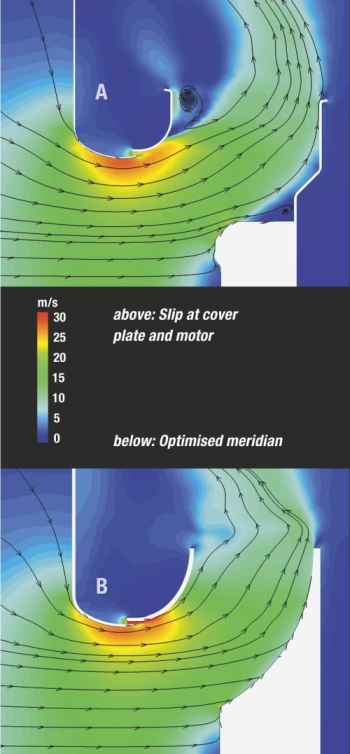Simulation tools for aerodynamics
We are often asked whether, in view of the top-quality simulation tools, aerodynamic measurements are still necessary. Indeed, in the last 30 years there has been tremendous progress in the ability to predict flow phenomena. Whereas not too long ago it took days and weeks to calculate relatively simple, often more academic cases on extremely expensive supercomputers; thanks to the enormous improvement in the computing capacity of computers, huge progress in the development of computation logarithms and the continually increasing experience in the use of new tools, a completely new situation has arisen.
Today, even the processors found in any PC are sufficient hardware. They are arranged to form so-called clusters (i.e. several processors combined in groups). This creates very powerful computers which, compared to the former age of the supercomputer, are very inexpensive and easy to use and whose operation is no great obstacle even for medium-sized companies. Also with regard to computation procedures, there has been great progress, leading to an enormous improvement in the accuracy of computation results even with complex geometries and operating conditions. Meanwhile there are advanced commercial computation programs for various areas of application.
Whereas initially aerodynamic simulations were carried out mainly for aeronautical engineering applications, today there is hardly an area of aerodynamics in which the most varied problems are not being examined with the use of simulation methods.
With regard to our topic of air flow around fans, air performance and efficiency are of particular interest, whereby local flow phenomena such as slip, vortex generation and uneven air flow reduce these variables, and should thus be avoided. The advantage of simulation compared with measurement thus lies primarily in the fact that the flow field around the blades makes the problems visible, so that they can be specifically eliminated. In Fig. A, the flow slips at the cover plate and motor, for which reason this impeller has rather low efficiency. By means of a more favourable arrangement of the flow channel, slip is prevented (Fig. B), air performance and efficiency are thus considerably improved. This example shows that problems which, in the time before simulations tools, could only be worked on using many time-consuming measurements on the basis of ‘trial and error’, can today be resolved with great accuracy by means of simulation.
However, since considerable simplifications are sometimes necessary for the calculation (especially for calculating turbulence), there may also be cases in which simulation does not provide satisfactory accuracy or for which a calculation is not expedient on account of the excessive computing effort. And hence the answer to the initially posed question, that today and also in future, aerodynamic measurements are and will remain indispensable. There will be a considerable shift to measurements serving to check simulation results which are required for acceptance of the final data and with which physical variables are determined which are not (yet) accessible to a simulation, for example noise generated by aerodynamic processes.


Leave a comment